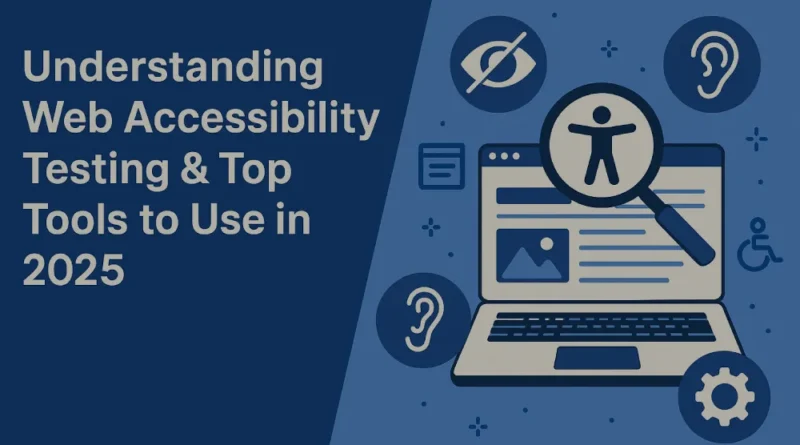Understanding Web Accessibility Testing & Top Tools to Use in 2025
In 2025, it’s more important than ever to make sure that everyone can enjoy the digital world. It is called “web accessibility testing” to make sure that websites and apps can be used by people with disabilities. Users who have trouble seeing, hearing, moving around, or thinking clearly are included. To ensure digital equality, the goal is to meet well-known guidelines like WCAG (Web Content Accessibility Guidelines).
Understanding and improving the user experience are also important parts of accessibility. A website that has been tried well can be used by anyone, even those who use screen readers, other input devices, or voice navigation tools.
Why Web Accessibility Testing Matters
A big part of the world’s population lives with some kind of disability. Accessibility testing makes sure that your website works for everyone, helps your SEO, makes your website mobile-friendly, and keeps you out of trouble with global laws like the Americans with Disabilities Act (ADA) and the European Accessibility Act (EAA).
Leading Accessibility Testing Tools in 2025
1. Equal Access Toolkit (EAT 2025)
An AI-based tool to scan sites by detecting complex accessibility issues, allowing both natural language and voice input, and combination with Figma and Webflow to test designs earlier.
2. axe-core and axe DevTools
axe, which remains a popular option, provides an automation of locating issues and integrates with Chrome, Firefox, and large-scale CI/CD pipelines. Perfect in respect of developers and QA teams.
3. WAVE WebAIM
Few questions can be asked about WAVE, a stable top quality, which helps to emphasize the obstacles in accessibility directly on the web pages and is a well-rewarded tool among educators, small teams, and nonprofits.
4. Lighthouse 10.0
The tool provided by Google is still developing; more accessibility audits can be performed in Chrome DevTools; and the scoring logic is also improved according to WCAG 2.2+.
5. AccessScan AI
An emerging 2025 tool, the cloud-based application is based on machine learning to recreate the functional and design shortcomings of various disabled users and give visual feedback of such issues.
Final Thoughts
In 2025, testing for web accessibility is smarter, more advanced, and more automatic than ever before. Businesses can make digital goods that everyone can use by using up-to-date tools and following best practices. Putting money into accessibility isn’t just a legal requirement; it’s a promise to support global design and growth that includes everyone.
Disclaimer
The information presented in this blog is derived from publicly available sources for general use, including any cited references. While we strive to mention credible sources whenever possible, Seo Company in Mumbai does not guarantee the accuracy of the information provided in any way. This article is intended solely for general informational purposes. It should be understood that it does not constitute legal advice and does not aim to serve as such. If any individual(s) make decisions based on the information in this article without verifying the facts, we explicitly reject any liability that may arise as a result. We recommend that readers seek separate guidance regarding any specific information provided here.

